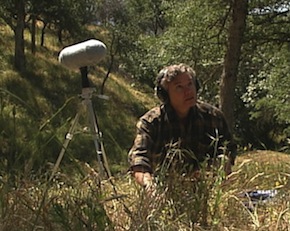To paraphrase Yogi Berra, you can observe a lot by listening
It was interesting to hear a report from NPR’s Richard Harris on a “new” branch of science called “soundscape ecology.” Harris interviewed Purdue landscape ecologist Bryan Pijanowski, who is part of a group of scientists advancing a “research agenda” to fully integrate the discipline into the study of ecosystems.

“We’re trying to understand how sounds can be used as measures of ecosystem health,” Pijanowski told Harris. Pijanowski is hardly the first to make this connection. An article co-authored by him and seven colleagues for the the March issue of the journal BioScience cites references back to 1969 (and gives a nod to Rachel Carson’s Silent Spring, which appeared in 1962).
One of Pijanowski’s collaborators, Bernie Krause, has spent nearly 30 years collecting soundscape recordings from around the world, with this concept in mind. He’s credited with parsing soundscapes into three components; biophony (sounds generated by animals), geophony (wind, moving water and the like), and anthrophony, the sounds introduced by human activity. Krause has long contended that biophony is a kind of barometer of ecosystem change. The 3,500 hours of recordings squirreled away at his Sonoma County-based Wild Sanctuary is among the most extensive of its kind. I’ve followed his work since documenting some of his work in Sequoia-Kings Canyon National Park about ten years ago. That work provided a foundation for case studies used in the paper by Pijanowski et al, what the authors call “tomorrow’s acoustic fossils.”
And yet the authors themselves acknowledge that soundscape ecology is a “relatively unexplored field.” As the BioScience article points out, the National Park Service took an early leadership role, recognizing soundscapes as a park resource to be managed and protected (the subject of a 2009 radio segment, for which I interviewed Krause, among others). Also among the co-authors is Stuart Gage of Michigan State University, who was part of that baseline recording work at Sequoia. Those recordings are among the data harnessed by the authors for case studies presented in the article, along with links to the audio itself.
At a time when terms like “assisted migration” and “species triage” have gained currency in the ecological lexicon, a serious exploration — and broader recognition — of what sounds can tell us about rapidly changing ecosystems seems promising and perhaps overdue.
